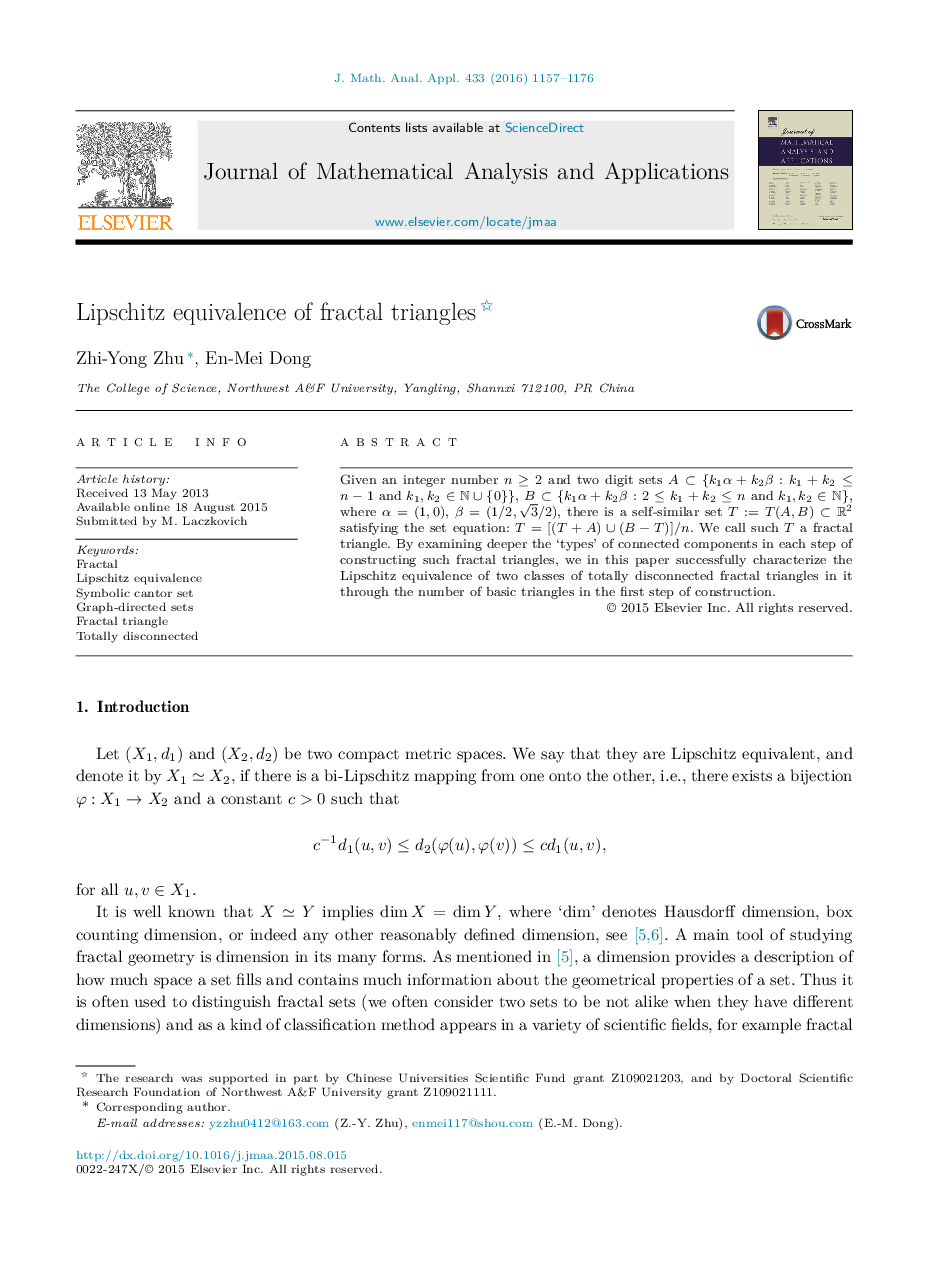| Article ID | Journal | Published Year | Pages | File Type |
|---|---|---|---|---|
| 4614919 | Journal of Mathematical Analysis and Applications | 2016 | 20 Pages |
Abstract
Given an integer number n≥2n≥2 and two digit sets A⊂{k1α+k2β:k1+k2≤n−1andk1,k2∈N∪{0}}, B⊂{k1α+k2β:2≤k1+k2≤nandk1,k2∈N}, where α=(1,0)α=(1,0), β=(1/2,3/2), there is a self-similar set T:=T(A,B)⊂R2T:=T(A,B)⊂R2 satisfying the set equation: T=[(T+A)∪(B−T)]/nT=[(T+A)∪(B−T)]/n. We call such T a fractal triangle. By examining deeper the ‘types’ of connected components in each step of constructing such fractal triangles, we in this paper successfully characterize the Lipschitz equivalence of two classes of totally disconnected fractal triangles in it through the number of basic triangles in the first step of construction.
Keywords
Related Topics
Physical Sciences and Engineering
Mathematics
Analysis
Authors
Zhi-Yong Zhu, En-Mei Dong,
